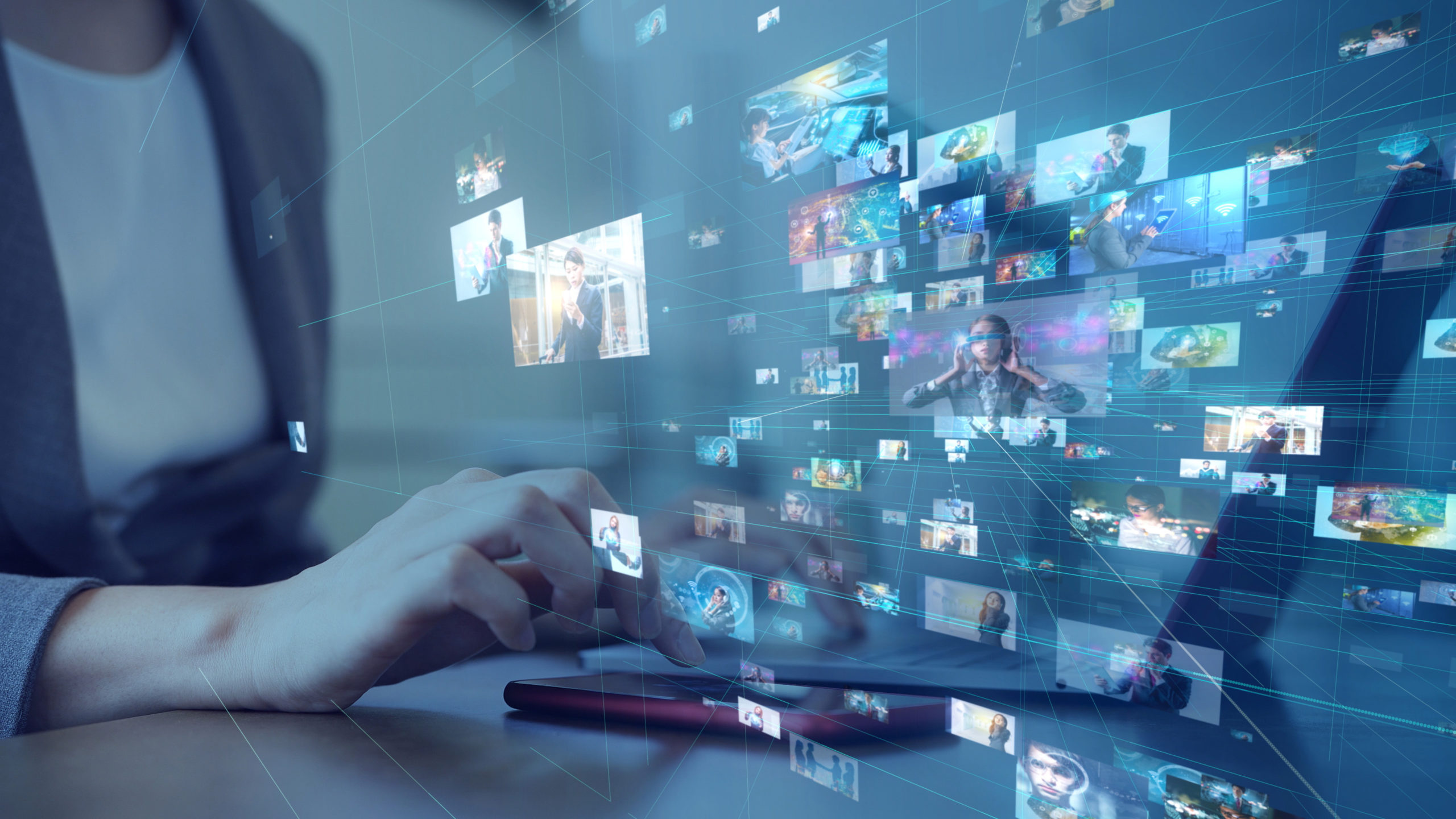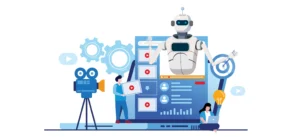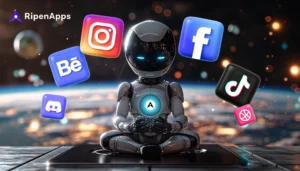AI in Media: Transforming Content Creation, Distribution, and Consumption
Introduction
Artificial Intelligence (AI) has steadily reshaped nearly every sector of the global economy, and media is no exception. From newsrooms and streaming platforms to advertising, film production, and social media, AI is driving innovation, efficiency, and personalization at unprecedented scales. What was once considered futuristic—AI-generated news articles, deepfake actors, personalized movie recommendations, and automated video editing—is now part of the mainstream media ecosystem.
As the media industry continues its digital transformation, AI sits at the intersection of creativity, technology, and consumer demand. But along with opportunities come challenges—bias in algorithms, ethical concerns about deepfakes, copyright issues, and the risk of replacing human creativity.
This article takes a deep dive into the role of AI in media, exploring its applications, benefits, challenges, and the future of intelligent content ecosystems.
1. The Role of AI in Modern Media
AI in media isn’t just about automation—it’s about reimagining how stories are created, distributed, and consumed. Broadly, AI in media functions in three main areas:
-
Content Creation – Automating writing, video editing, image generation, and even scriptwriting.
-
Content Distribution – Recommending personalized content to users and optimizing delivery through platforms like Netflix, YouTube, or Spotify.
-
Content Consumption – Enabling audiences to interact with media through chatbots, AI-powered virtual assistants, and immersive technologies like AR/VR.
AI provides a competitive advantage for media companies by reducing costs, improving audience engagement, and allowing data-driven storytelling.
2. AI in Content Creation
One of the most visible areas where AI is making waves is content creation.
2.1 Automated Journalism
News agencies such as The Associated Press and Reuters use AI to generate financial reports, sports updates, and weather summaries in real time. Algorithms can process structured data (like stock prices or match scores) and convert it into human-readable articles within seconds.
This automation allows journalists to focus on investigative reporting and in-depth analysis while AI handles repetitive news updates.
2.2 AI in Scriptwriting and Creative Media
AI tools like ChatGPT, Jasper AI, and Sudowrite help writers brainstorm plotlines, draft scripts, and overcome writer’s block. Film studios have begun experimenting with AI-driven storyboards that analyze audience preferences to predict box-office success.
For example, Warner Bros. has partnered with an AI platform to guide content investment decisions by analyzing past box-office performance and audience demographics.
2.3 AI in Video and Film Production
AI-powered tools like Runway Gen-2, Synthesia, and Pika Labs are enabling video generation from text prompts. These technologies can automatically edit videos, add visual effects, or even generate synthetic actors.
This dramatically reduces production costs for marketing agencies, YouTubers, and even large studios.
2.4 AI in Music and Art
AI in media isn’t just about words and videos—it’s also revolutionizing music and art. Platforms like AIVA and Amper Music compose original tracks, while visual tools like DALL·E, Stable Diffusion, and MidJourney create digital artwork.
Musicians are now collaborating with AI systems to co-create, blending human creativity with algorithmic precision.
3. AI in Content Distribution
Once media is created, the next challenge is distribution—ensuring it reaches the right audience at the right time. AI has revolutionized this through personalization and recommendation engines.
3.1 Personalized Recommendations
Netflix, YouTube, and Spotify use AI algorithms to analyze viewing or listening behavior and suggest content that aligns with user preferences. This not only boosts user satisfaction but also increases retention rates.
For example:
-
Netflix uses AI to personalize thumbnails for each user, increasing click-through rates.
-
YouTube’s recommendation engine drives over 70% of watch time on the platform.
3.2 Dynamic Advertising
AI powers programmatic advertising, where algorithms buy and place ads in real time based on user data. Media companies use AI to target ads more effectively, maximizing revenue while reducing wasted ad spend.
3.3 Social Media Distribution
Platforms like Facebook, Instagram, and TikTok rely on AI to prioritize and surface content. The algorithm determines which videos go viral and which posts remain unnoticed. This AI-driven curation has reshaped how people consume media globally.
4. AI in Content Consumption
The audience experience itself is being transformed by AI.
4.1 Chatbots and Virtual Anchors
Media outlets like China’s Xinhua News Agency have introduced AI-generated virtual news anchors. These digital presenters can deliver news 24/7 without fatigue. Similarly, chatbots provide personalized news digests to readers based on their interests.
4.2 Immersive Media with AI
Virtual Reality (VR) and Augmented Reality (AR) experiences are enhanced by AI-driven personalization. For example, AI can adapt storylines in interactive films or games based on user reactions and choices.
4.3 Accessibility through AI
AI is improving accessibility in media consumption by generating real-time captions, translations, and audio descriptions. This ensures inclusivity for people with hearing or visual impairments.
5. Benefits of AI in Media
The adoption of AI offers several advantages:
-
Efficiency: Automating repetitive tasks like video editing, captioning, and report writing saves time.
-
Cost Reduction: Lower production and distribution costs make it easier for startups and small creators to compete with large media companies.
-
Personalization: AI-driven recommendations keep audiences engaged and loyal.
-
Creativity Boost: AI assists creators with ideation and editing, opening new artistic possibilities.
-
Scalability: AI enables media companies to distribute tailored content to millions of users simultaneously.
6. Challenges and Ethical Concerns
While AI brings immense value, it also raises serious ethical, legal, and social challenges.
6.1 Deepfakes and Misinformation
AI-generated deepfake videos pose risks to journalism and public trust. Fake news content created with AI can spread misinformation faster than ever.
6.2 Copyright and Intellectual Property
Who owns an AI-generated image, song, or article—the creator, the AI, or the company that built the AI? Copyright law is struggling to catch up with this reality.
6.3 Bias in Algorithms
AI systems reflect the biases present in their training data. For example, recommendation engines may reinforce stereotypes or promote polarizing content.
6.4 Job Displacement
Automated journalism, AI anchors, and AI video editors could reduce employment opportunities for human professionals in media.
6.5 Ethical Storytelling
There’s an ongoing debate about whether AI-generated art or journalism can capture human empathy, nuance, and ethics—qualities often central to storytelling.
7. Case Studies of AI in Media
7.1 Netflix
Netflix’s entire business model revolves around AI-driven personalization. Beyond recommendations, AI is used to:
-
Predict the success of new shows.
-
Optimize video compression for faster streaming.
-
Personalize thumbnails and trailers.
7.2 The Washington Post
The Washington Post developed an AI system called Heliograf that automatically generates short news updates. It covered the 2016 U.S. elections, producing thousands of articles with minimal human oversight.
7.3 TikTok
TikTok’s AI recommendation engine has been a game-changer in short-form content. It analyzes user interactions (likes, comments, replays) to personalize feeds in ways unmatched by competitors.
7.4 Disney
Disney leverages AI for visual effects, character animation, and even crowd simulation in movies. Their research into generative AI for storytelling promises new levels of audience engagement.
8. The Future of AI in Media
AI in media is just getting started. The future may include:
-
Hyper-Personalized Content – Movies and shows that adapt dynamically to viewers’ emotions, detected through facial recognition or wearable devices.
-
AI Co-Creators – Humans and AI collaborating in writing novels, films, or music albums.
-
Decentralized Media – Blockchain-powered AI ensuring transparent royalty distribution for creators.
-
Ethical AI Standards – Governments and organizations may enforce strict regulations for AI use in media to combat misinformation and deepfakes.
-
Fully AI-Generated Platforms – Entire news outlets or entertainment platforms run by AI with minimal human involvement.
Conclusion
AI in media is transforming the industry from top to bottom—reshaping how content is created, distributed, and consumed. While it brings massive efficiency, personalization, and creative opportunities, it also introduces risks related to ethics, bias, and employment.
The future of media will not be AI versus humans, but rather AI with humans—a collaboration where intelligent systems handle scale and automation while human creators bring empathy, ethics, and originality.
As the lines between real and artificial blur, one thing remains certain: AI will continue to redefine the media landscape, and those who adapt will shape the future of storytelling.
For quick updates, follow our whatsapp channel –https://whatsapp.com/channel/0029VbAabEC11ulGy0ZwRi3j
https://bitsofall.com/ai-data-center-expansion-powering-the-future-of-artificial-intelligence/
https://bitsofall.com/microsofts-proprietary-models-building-the-future-of-ai/
Baidu’s ERNIE X1.1 — a reasoning-first model that tightens the gap with Western giants
Oracle and OpenAI: Inside a Partnership That’s Reshaping AI Infrastructure






